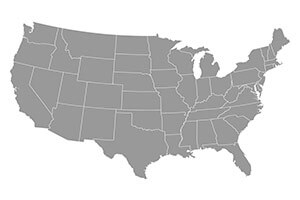
As we near our press deadline, Putin’s Russia has officially invaded Ukraine. It is difficult to predict the long-term effects of that aggression, but early oil-price spikes and financial-market upheaval suggest the U.S. economy will take at least a short-term hit. As a nation, we are already seeing close to double-digit inflation resulting in part from our own missteps, and this will likely be exacerbated in the near future by events beyond our control.
A combination of increased consumer demand and ongoing federal actions against foreign dumping means that honey prices continue to rise in most places. Unfortunately, for many beekeepers the rising income is in large part being cancelled out by increasing costs. Similarly, despite a resurgence in new beekeeping customers, equipment suppliers and manufacturers are finding it difficult to raise prices fast enough to offset their own cost increases.
Northeast
Honey prices continue to rise in Pennsylvania, though one reporter warns that “we will need to be careful to not push consumers away.” Winter has been cold for the most part, with brief warmups, which should improve survival without depleting honey stores. Some beekeepers have seen added pressure from black bears. Apple pollination fees are expected to be around $60 per hive.
Northern New York reports a good, cold winter without a lot of temperature swings, which bodes well for honey stores and survival rates.
New Hampshire has had a cold winter, with one stretch of almost nine weeks without cleansing flights. COVID-driven honey sales remain very strong, with a January increase our reporter attributes to “Omicron’s PR campaign.”
Virginia demand for local honey is also very good. December was warm but January very cold, though with no long stretches of bitter cold. Local nuc suppliers have supplanted much of past demand for package bees.
Maryland’s honey markets are strong, but honey prices still need to increase to cover higher operating costs.
Mideast
Tennessee’s winter has been up and down, and heavy feeding has been needed. Demand for honey has in many cases outstripped supply.
Eastern Kentucky reports 60% losses, with heavy feeding needed for survivors. Heading toward spring, demand has been stronger than supply, for both honey and bees.
Southeast
It’s been a warm winter in Alabama; colonies are generally strong but require heavy feeding. Honey, bees and supplies are all increasing in price.
Georgia experienced a warm winter as well. Honey sales have been strong.
Southwest
East Texas was dry last fall, but recent rains have helped. Both retail and wholesale volumes have been good, putting pressure on last year’s low production. “Continued increases in equipment costs are frustrating producers and limiting growth potential.”
East Central
llinois reports a mostly-mild winter, but could use more moisture coming into spring. Last year’s honey flow was very good despite some drought conditions, but those conditions likely put stress on the locust and basswood trees. A northern IL correspondent reports a $55/hive contract for pumpkin and watermelon pollination.
Indiana’s winter has been average, as have colony conditions. Honey stores are holding up well.
The Wisconsin Honey Producers have set up a task force to work with the state and federal governments on the bear problem, as black bears have been damaging an increasing amount of the state’s honey crop. Unfortunately the state’s Ag department seems more concerned in recent years with native pollinators. The new cadre of COVID beginners consists in large part of middle-aged hobbyists to sideliners looking to be more self-sustainable.
Northern Indiana winter temperatures have been cold but not bitter, and survival rates look promising. Demand is good for honey and bees.
West Central
Missouri saw a warm December, but January and February were up and down, with several bouts of snow and ice, and lots of high winds, but nothing approaching the bitter cold stretch of 2021. Retail honey demand is very strong, after dropping off some last fall.
An Iowa reporter tells of a large honey packer who called last July “offering top dollar ($2.27/lb.) for any and everything I had … what a change! A few months earlier he was offering $1.60.” More surprising, he was subjecting it to testing, including a “purity” test for adulteration. “That was reassuring, and certainly long overdue.” December was mild here, but January was very cold and the winds were relentless.
Intermountain
Winter has been warm in Colorado, and colonies were looking strong in late February. Moisture conditions were poor to average, and prospects for the coming season may depend on snow and rain coming into spring.
West
Washington colonies were looking average to weak in February, likely due to last year’s drought and wildfire smoke. Honey prices continue to rise, but supplies will likely not keep up this year.
It’s been cold in Oregon, with more below-freezing temperatures; “bees are doing better because of less flying days.” Feeding has been necessary for colonies going to almonds. Prices have improved due to import actions, and to production shortages, though staffing shortages will likely prevent producers from expanding their operations.


